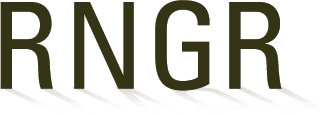Solanaceae (Lycium)
Lycium (fremontii)
Solanaceae
Nightshade
Lycium
fremontii
Gray
Wolfberry, many others
There are actually three species that occur along the Lower Colorado River in SW Arizona. L. Andersonii, L. fremontii and L. torreyi. Protocol is for all, as they are similar and difficult to tell apart. Fremontii has the smallest distribution, occurring in arid regions of Southern California and Arizona.
plants
vegetative
Container (plug)
1 gallon
12 Months
As plants are taken from multi branched cuttings and grow slowly, specifications are that the plant is alive and has an established root system. Much of the following information is based on natural history and guesswork. More research is needed.
Take cuttings in spring or fall, when plant looks healthy and has leaves. Lycium will drop leaves and look dead under drought/high heat conditions, only to resprout with precipitation or lower temperatures.
As these plants grow slowly, but do not desiccate easily, it seems better to leave side shoots on the branches. Cut branches into 12-15 inch long sections. Trim off lower side branches for about 9 inches to provide stem for pot. Otherwise leave untrimmed.
Keep cuttings moist until ready to plant.
All plants in our nursery are grown outside under 68% shade cloth or in full sun. (Plants grown under shade will be more leggy, but soil temperatures will be lower during the summer heat. Its a trade off.) Therefore, outside temperature dictates when to plant. Pots are the typical 7 in diameter x 7 in high black plastic pots such as the ones made by Nursery Supply. However, we reuse and buy back pots, so they are often a mix of slightly different sizes, styles and brands. No additional cleaning is done. Soil mixture is approximately 50% local soil (sand) and 50% inexpensive wood mulch (mostly to lighten up the pots for shipping)
After trimming cuttings up for planting, dip end in .1% IGA. Push stem into pot and snug soil around it. Keep soil moist but not soggy. Overplant by about 50%. We have only had moderate success propagating Lycium from stem cuttings. Root cuttings are supposed to easily propagate. It would be worth trying this also.
minimum 2 months.
Lycium growth varies depending upon location. SW Arizona varieties seem to leaf out in March/April, flower about a month later, and then set seed. Pollination and seed distribution are by birds. Seeds are generally thought to sprout in the fall, taking advantage of winter rains. It is not uncommon for species in our area to drop all leaves and look dead for about 6 month out of the year, starting in late May, early June. They will sometimes green up again in the fall with the monsoon rains. Very opportunistic based on precipitation.
Spring and Fall?
It is difficult to tell if cuttings are still alive, as they sometimes don't have leaves. Check for good root growth by upending pot. Be careful not to overwater, or cuttings will rot out. In nature this is a very drought tolerant plant with an extensive root system.
None.
After plants are found to have adequate root growth, they can be outplanted. It wouldseem to make the most sense to plant in the spring or fall. All of our plants are hand loaded and shipped via truck to the planting sites.
None
Many species of Lycium in the Southwest. More study needs to be done on propagation from stem and root cuttings, and from seed. This is a commonly seen species in desert washes, and is prime territory for birds when in flower and fruit. Makes a nice landscape plant when given supplemental water.
NRCS Plants Database, USFS FEIS Database, Sonoran Desert Plants: an Ecological Atlas, Raymond M. Turner, R. M. Turner, Tony L. Bergess (Editor). (For distribution information).
Kleffner, Jennifer. 2001. Propagation protocol for production of Container (plug) Lycium fremontii Gray plants 1 gallon; Lower Colorado River Prop. Specialist Bayfield, Colorado. In: Native Plant Network. URL: https://NativePlantNetwork.org (accessed 2025/08/29). US Department of Agriculture, Forest Service, National Center for Reforestation, Nurseries, and Genetic Resources.



